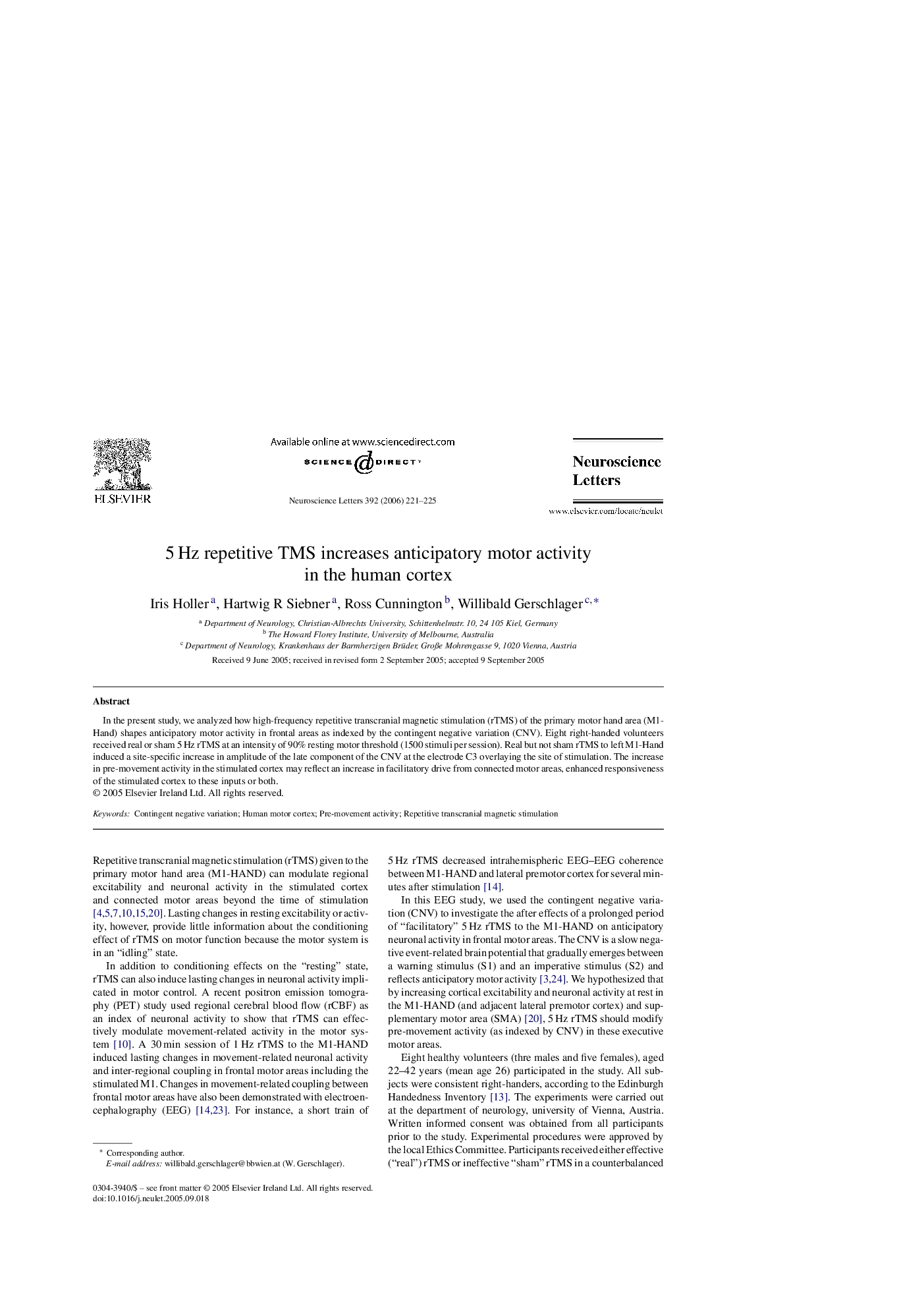| Article ID | Journal | Published Year | Pages | File Type |
|---|---|---|---|---|
| 4351254 | Neuroscience Letters | 2006 | 5 Pages |
In the present study, we analyzed how high-frequency repetitive transcranial magnetic stimulation (rTMS) of the primary motor hand area (M1-Hand) shapes anticipatory motor activity in frontal areas as indexed by the contingent negative variation (CNV). Eight right-handed volunteers received real or sham 5 Hz rTMS at an intensity of 90% resting motor threshold (1500 stimuli per session). Real but not sham rTMS to left M1-Hand induced a site-specific increase in amplitude of the late component of the CNV at the electrode C3 overlaying the site of stimulation. The increase in pre-movement activity in the stimulated cortex may reflect an increase in facilitatory drive from connected motor areas, enhanced responsiveness of the stimulated cortex to these inputs or both.
